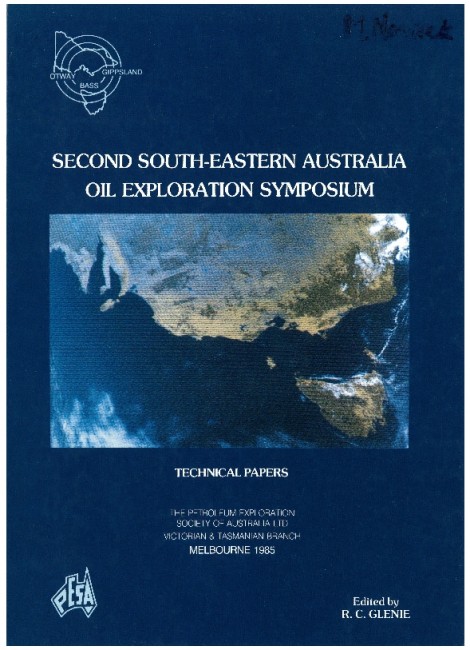Publication Name: Second South-Eastern Australia Oil Exploration Symposium - Technical Papers
Authors: K.A. Hegarty, I.R. Duddy, P.F. Green, A.J.W. Gleadow, I. Fraser and J.K. Weissel
Date Published: December 1986
Number of Pages: 21
Reference Type: Book Section
Abstract:
The subsidence history at several locations within the Gippsland Basin is reconstructed using biostratigraphicand lithostratigraphic data from onshore and offshore wells. Four distinct Zones which correspond to different patterns of subsidence are identified. Each Zone shares an early relatively rapid phase of subsidence which may be caused by extensional tectonics driving basin subsidence. This rapid phase is followed by a period of slower subsidence which is modelled as simple thermal cooling. A stretching factor of 1.4 is used to best approximate the observed subsidence in the central axis of the basin. Similar amounts of extension were determined for wells in the Otway Basin.
The 'mismatch' between observed and modelled subsidence curves in Zone 2 (central basin axis) is attributed to the effects of palaeo-water depths and eustatic sealevel fluctuations. The magnitude of palaeo-water depths are believed to be greater than sealevel changes, but the relative contributions from each effect are difficult to resolve.
Fission-track analysis was undertaken on several outcrop and downhole samples. The palaeo-temperature
history determined from the analysis shows that the downhole samples from the basin axis were simply and continuously buried. Exposed Early Cretaceous samples have fission-track characteristics (age and track lengths) which suggest that these rocks have never been hotter than about 70?C. Nearby outcropping Devonian granite samples show evidence of heating effects possibly related to the tectonics which led to the formation of the Gippsland Basin.


